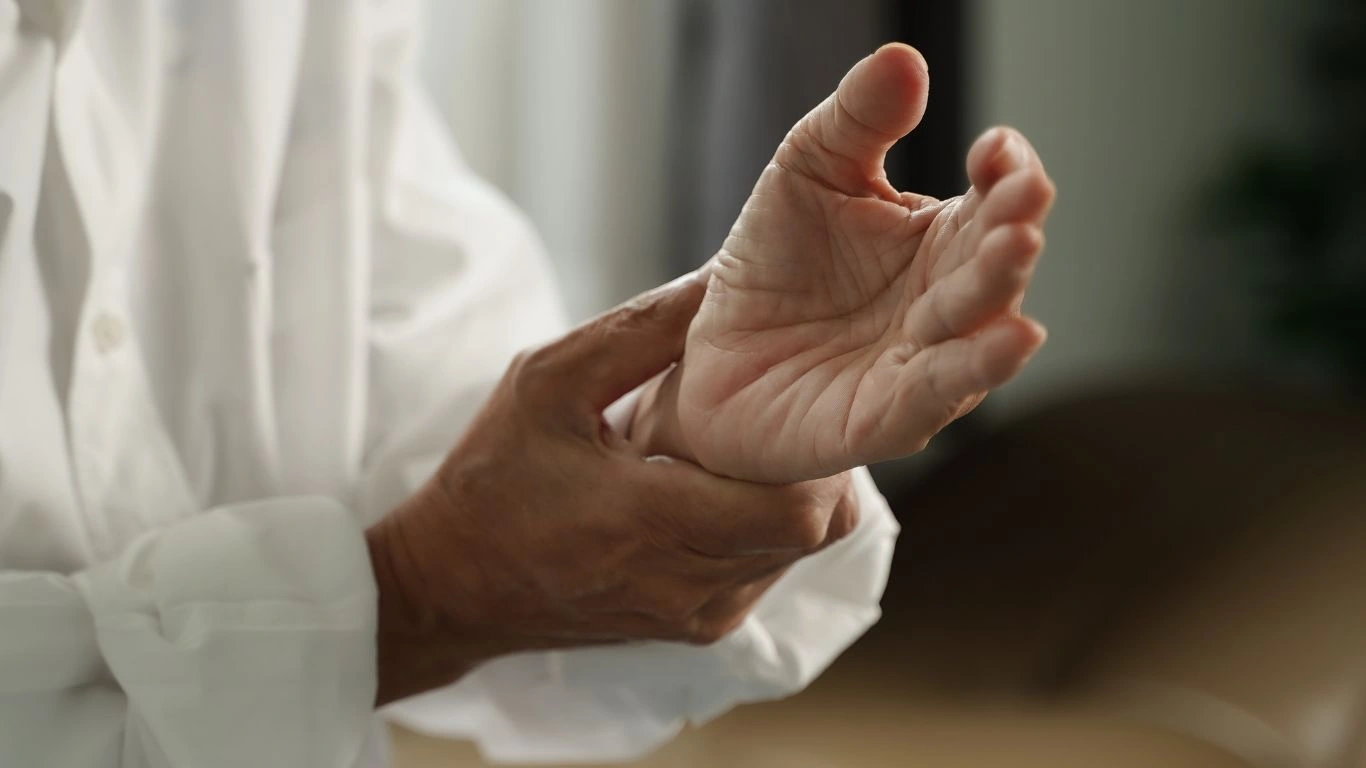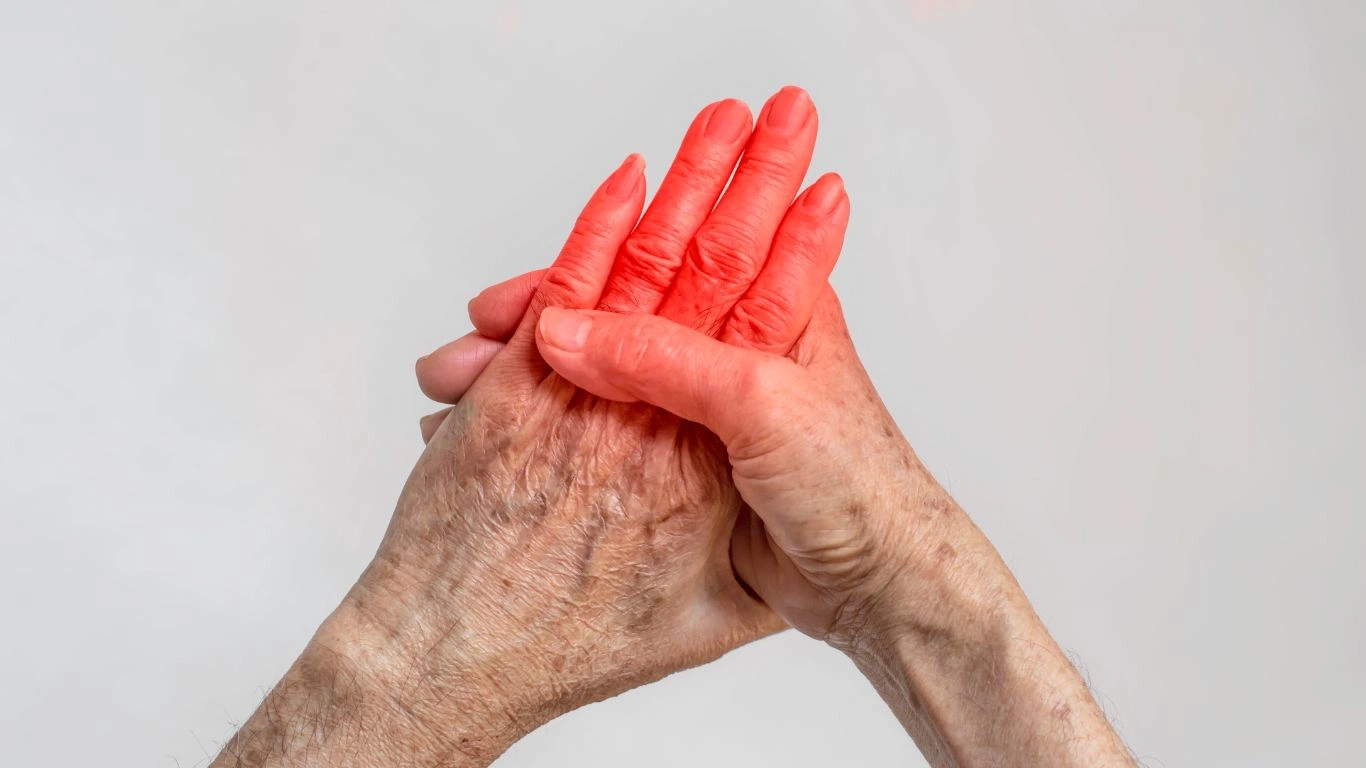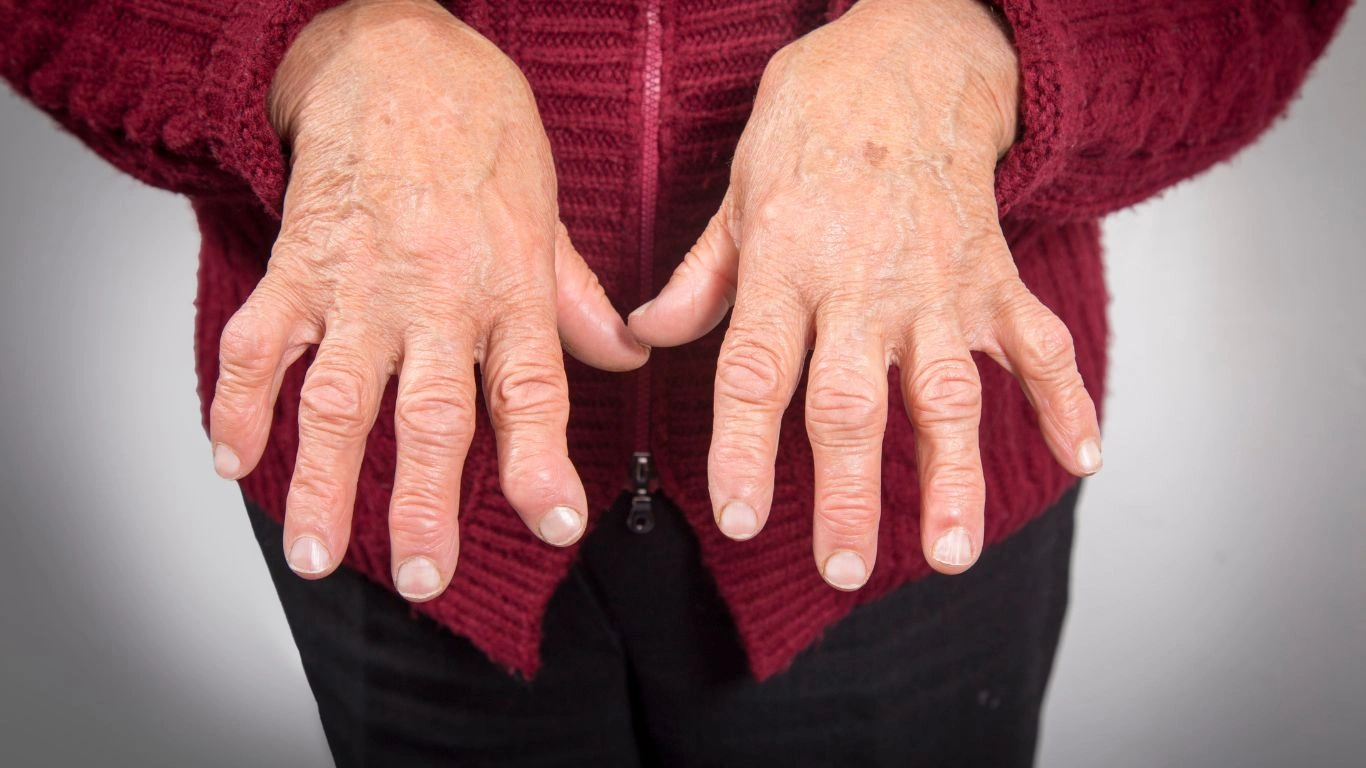Managing Stress with Rheumatoid Arthritis: Powerful Daily Relief Tips
If there’s one thing I’ve learned in my years as a Rheumatology Nurse Practitioner, it’s this: managing stress with rheumatoid arthritis isn’t a luxury—it’s a survival skill. I’ve seen patients make incredible progress with their joint pain and inflammation just by dialing down the stress in their lives. Easier said than done, I know. Stress sneaks in quietly and starts wreaking havoc on your immune system before you even realize it’s happening. I’ve been there too—long days, little sleep, endless worries—and I know firsthand how much harder RA gets when stress decides to crash the party.
Understanding the Stress-RA Connection

Let’s break it down simply. Rheumatoid arthritis is an autoimmune disease. That means your immune system—your body’s defense mechanism—is in overdrive and mistakenly attacking your joints. Now toss in chronic stress. When you’re stressed, your body pumps out hormones like cortisol and adrenaline, which are great in a crisis but toxic over time. Long-term stress keeps your immune system in a constant state of activation, which can worsen inflammation and flare-ups.
I’ve had countless patients ask me, “Tarra, is my stress really making my RA worse?” The short answer? Yes, absolutely. In fact, stress can be a huge trigger for flare-ups. I’ve seen patients who were stable for months suddenly backslide after a major life stressor—a divorce, a job loss, even just holiday chaos. And while stress isn’t the only factor, it’s definitely one we can start addressing today.
What Stress Does to Your RA Symptoms
Stress doesn’t just make you feel anxious or overwhelmed. In RA patients, it often shows up in very specific, physical ways:
- Increased joint pain and stiffness, especially in the mornings
- Fatigue that hits like a truck, no matter how much sleep you got
- Digestive issues—yep, stress loves your gut and not in a good way
- Sleep disturbances, which only fuel the inflammation loop
That whole mind-body connection thing? It’s real. And when you’re living with RA, ignoring stress is like ignoring a leak in your roof during a rainstorm. Eventually, it’s going to cause damage.
Recognizing Your Unique Stress Triggers

One of the first steps in managing stress with rheumatoid arthritis is knowing what your triggers are. And not everyone’s stress switch gets flipped the same way. For one patient, it might be a high-pressure job; for another, it’s family conflict or financial worries. For me personally? It was the guilt of not being able to do everything for everyone all the time. Sound familiar?
I always tell my patients to do a “stress audit.” Grab a notebook or even just your phone notes, and jot down every time you feel your chest tighten, your jaw clench, or your energy plummet. What just happened? Who were you talking to? What were you thinking about? That right there is your clue.
Common RA Stress Triggers I See in My Practice
- Feeling misunderstood—RA is invisible, and people assume you’re fine when you’re not
- Fear of disease progression—that “what if I lose more mobility” spiral
- Medication overwhelm—new prescriptions, side effects, insurance issues
- Work-life imbalance—trying to keep up when your body’s begging you to rest
- Financial strain—RA can be expensive, between meds, specialists, and time off
The key here is: if you can name it, you can tame it. I know that sounds cheesy, but it’s true. Once we can see our stress triggers clearly, we can start building strategies around them.
Why It’s So Hard to Just “Relax” When You Have RA

“You just need to relax more.” If I had a dollar for every time someone told one of my RA patients that, I could probably retire. Relaxation isn’t easy when your body is in pain and your brain won’t shut up. Let’s be real—trying to meditate while your knees feel like they’re on fire? Not exactly zen.
The truth is, many stress-relief techniques are sold like one-size-fits-all solutions. But what works for your best friend may not work for you. That’s okay. I always tell my patients to think of stress management like building a personalized toolkit. If meditation helps, awesome. If it makes you want to throw your phone across the room, let’s try something else.
Things That Actually Help (Real Talk)
- Breathing exercises—Even just 5 deep belly breaths can calm your nervous system
- Gentle movement—Think stretching, tai chi, or a slow walk (not a HIIT class)
- Creative outlets—Journaling, painting, baking, anything that gets you “in the zone”
- Therapy or support groups—Especially with others who “get” the RA life
- Time in nature—Even 10 minutes outside can lower cortisol
One of my favorite patients told me her daily ritual is just sitting on her porch with a cup of tea, no phone, just the breeze. And honestly? That’s healing in its own way. We don’t need perfect, we just need consistent.
Building a Daily Routine That Supports Your RA and Lowers Stress

Let’s talk about routines. Not in the rigid, perfectionist way—but in the “let’s make life a little easier” kind of way. Over the years, I’ve noticed that when my RA patients create gentle, flexible routines, their stress levels go way down. It’s like giving your brain and body a heads-up about what’s coming next, which reduces that anxious tension we all know too well.
For me, my non-negotiables include a slow morning (no rushing around), a midday stretch break, and screen-free time before bed. Simple stuff, but when I skip these? I feel it—in my joints and my mood. You don’t need to overhaul your life overnight, but here are some key things to build into your day that genuinely help with managing stress with rheumatoid arthritis.
Elements of a Low-Stress RA-Friendly Routine
- Consistent wake-up and sleep times – Your body loves predictability, especially your hormones
- Time-blocking – Grouping similar tasks together reduces overwhelm
- Built-in breaks – Don’t wait until you’re wiped out to rest
- Anti-inflammatory meals – Fuel that fights, not flares
- Mini movement sessions – 10 minutes here and there adds up
I always encourage folks to set alarms or reminders—not to be strict, but to nudge yourself gently. We tend to give all our energy away and leave ourselves running on empty. That’s where the flares sneak in.
Nutrition and Stress: What You Eat Matters (More Than You Think)

Let’s get into food for a minute—not as a cure-all (I wish), but as a tool. I’ve seen patients who didn’t change a single medication but saw huge improvements in mood and joint pain after making a few dietary shifts. And no, I’m not talking about going full keto or some intense cleanse. Just basic, real-food choices that lower inflammation and stabilize your energy.
Here’s the kicker: stress affects digestion. Ever get a stomachache when you’re nervous? That’s the gut-brain connection in action. If your gut’s inflamed, it can fire up your immune system, which makes RA worse. The good news? You can support both your gut and your stress response through mindful eating.
Foods That Help You Feel Better (Body & Brain)
- Omega-3 rich foods – Think salmon, walnuts, chia seeds
- Leafy greens – Kale, spinach, swiss chard (all loaded with nutrients)
- Fermented foods – Like kimchi, sauerkraut, yogurt for gut health
- Herbal teas – Chamomile, ginger, or turmeric blends to calm inflammation
- Berries – Packed with antioxidants to combat cellular stress
I also advise patients to keep a simple food-mood journal for a week. Nothing fancy—just jot down what you eat and how your body feels after. You’d be surprised how often we miss the connection between what we put on our plate and how we feel in our joints or even emotionally.
Social Support: You Weren’t Meant to Do This Alone

One thing I tell every new RA patient I meet: don’t isolate yourself. Stress thrives in silence. And let’s be real, chronic illness can be incredibly lonely—especially when people don’t understand what you’re going through. I’ve had patients who felt like they had to smile through the pain because no one in their circle really “got it.” That pressure alone is exhausting.
But when you find even one person—whether a friend, a support group member, or an online community—who truly listens, everything shifts. That sense of being seen and heard? It actually lowers cortisol levels. Human connection is healing. Period.
Ways to Build a Support Network That Works for You
- Join an RA-specific support group – In person or online, both are valuable
- Talk to a therapist – Especially one familiar with chronic illness or pain
- Be honest with loved ones – Tell them how you really feel, even if it’s hard
- Connect with peers – Social media has surprisingly supportive RA communities
- Lean into your care team – We’re here for you beyond just prescriptions
One patient of mine found a Facebook group full of other women with RA, and she said just seeing their posts helped her feel less alone. Not because they had perfect advice, but because they understood the little things—like why it’s a big deal to open a jar without pain or finally get a full night of sleep. That kind of support is gold.
Sleep and RA: The Vicious Cycle We Need to Break
If you’re not sleeping well, your stress levels are going to skyrocket. And if you’re stressed, you’re not going to sleep well. It’s the most annoying feedback loop ever. RA pain often peaks at night or early morning, and I’ve had many patients tell me they dread bedtime. That has to change, because quality sleep is one of your body’s best tools for healing and stress recovery.
Here’s something that helped me personally and that I now recommend to patients: create a wind-down ritual. It doesn’t have to be elaborate—just something consistent that signals to your body, “Hey, it’s time to chill.”
My Favorite RA-Friendly Sleep Tips
- Warm Epsom salt soak – Eases joint tension and promotes relaxation
- Magnesium-rich snack – Like a banana or a few almonds before bed
- Gentle stretching – Especially for the hips and shoulders
- Digital detox – Screens off at least 30 minutes before lights out
- Weighted blanket – Can soothe anxiety and support restful sleep
Sleep is a form of medicine, and if you’re not getting enough of it, managing stress (and RA itself) becomes ten times harder. Prioritize it without guilt—it’s not lazy, it’s necessary.
Movement Without Mayhem: Exercising With RA and Less Stress

If I had a dollar for every time someone with RA told me, “But exercise makes me hurt more,” well—I’d have a pretty solid side hustle. But here’s the thing: movement is one of the best ways of managing stress with rheumatoid arthritis. That doesn’t mean you need to start running marathons or sign up for bootcamp classes. In fact, please don’t. The goal is gentle, intentional movement that supports your joints, boosts your mood, and helps you shake off some of that stress that’s been hitching a ride.
When I first started recommending movement to patients, I had to shift my language. “Exercise” often sounded like a punishment. “Movement” feels more approachable. Whether it’s a 10-minute stretch session, a walk around your block, or dancing in your kitchen—movement counts.
Types of Movement That Support RA and Mental Health
- Yoga (RA-friendly modifications) – Focus on joint-friendly flows, not contortions
- Swimming or water aerobics – No impact, lots of relief
- Resistance bands – Build muscle without overloading joints
- Walking with intention – Even five minutes counts
- Stretching breaks – Short, frequent sessions throughout the day
Personally, I love gentle yoga for my own stress relief. I’m not talking Instagram-worthy poses—I’m talking child’s pose, deep breathing, and maybe falling asleep in savasana. It helps me decompress and gives my body a chance to realign after long shifts on my feet.
Mindfulness That Actually Makes Sense for RA

Let’s address the elephant in the room—mindfulness sounds great in theory, but when your body is screaming at you, it’s hard to focus on your breath. I get that. Still, there are some easy and doable mindfulness practices that help with managing stress with rheumatoid arthritis without making you feel like you’re failing at being “zen.”
I remember one of my patients, Janet, who told me she hated guided meditations because the voices made her feel more irritated. Instead, she found that just sitting in silence with a hot cup of tea worked better. That’s mindfulness too. It’s not about doing it “right,” it’s about being present and kind to your nervous system.
Mindfulness for People Who Can’t Sit Still
- Box breathing – Inhale for 4, hold for 4, exhale for 4, hold for 4. Repeat 3-4 rounds.
- Body scan – Start from your toes and work your way up, noticing where tension lives.
- Walking meditation – Pay attention to the feel of your feet hitting the ground.
- Gratitude journaling – One to three things you’re thankful for each day
- Mindful chores – Yes, even washing dishes can be meditative if you focus on the sensations
Stress loves to pull us into the past or launch us into the future. Mindfulness grounds you in the now—and for people living with RA, staying present can reduce the spiral of “what ifs” and overwhelm. I promise, it doesn’t have to be perfect to be powerful.
When Stress Management Needs Backup: Getting Professional Help
Sometimes, despite all the tools, strategies, and positive vibes in the world—stress gets too big to handle alone. And there’s zero shame in that. Actually, it takes courage to say, “Hey, I need some help here.” I’ve referred many patients to mental health professionals, and it’s often a game-changer in how they cope with their diagnosis and day-to-day life.
If your stress is starting to impact your relationships, work, sleep, or how you feel about yourself—please talk to someone. Whether it’s a therapist, a counselor, or even a trusted healthcare provider, you deserve support.
How to Find the Right Support
- Ask your rheumatologist – They often know professionals who understand chronic illness
- Use reputable directories – Try platforms like Psychology Today
- Seek someone with experience in chronic pain or autoimmune disease
- Try virtual therapy – Great for flare-up days when leaving the house is hard
- Explore integrative health clinics – Some offer therapy, acupuncture, and coaching under one roof
As a nurse practitioner, I’ve worked alongside therapists and health coaches who bring a different kind of support to the table—stuff that meds alone can’t always fix. The mental and emotional piece of RA is real, and it deserves just as much attention as the physical pain.
Wrapping It All Together: Stress Management Is Part of RA Care
If you’ve made it this far, thank you. That tells me you’re committed to your well-being—not just surviving with RA, but actually living. And I mean that. Managing stress with rheumatoid arthritis isn’t just a “nice to have.” It’s essential care. Right up there with your meds, your labs, and your follow-up visits.
And the best part? You don’t have to do it all at once. Pick one small thing from this article that resonates with you. Try it for a week. Then add another. This isn’t about perfection—it’s about progress, and every step you take toward lowering stress is a step toward feeling better in your body.
Remember, I’m not just writing this as a clinician—I’m walking this path too, with patients I care deeply about and a body that reminds me daily to slow down, breathe, and be kind to myself. We’re in this together.
Helpful References
- Arthritis Foundation
- Centers for Disease Control and Prevention (CDC)
- Psychology Today
- National Institute of Arthritis and Musculoskeletal and Skin Diseases
Disclaimer
This content is for informational purposes only and does not substitute professional medical advice, diagnosis, or treatment. Always consult your healthcare provider before making changes to your routine or treatment plan.

Tarra Nugroho is a dedicated Nurse Practitioner with a strong foundation in family and preventive care. She brings both compassion and clinical expertise to her practice, focusing on patient-centered care and health education. As a contributor to Healthusias.com, Tarra translates medical knowledge into clear, empowering articles on topics like women’s health, chronic disease management, and lifestyle medicine. Her mission is simple: help people feel seen, heard, and informed—both in the clinic and through the content she creates. When she’s not caring for patients, Tarra enjoys weekend hikes, plant-based cooking, and curling up with a good health podcast.






